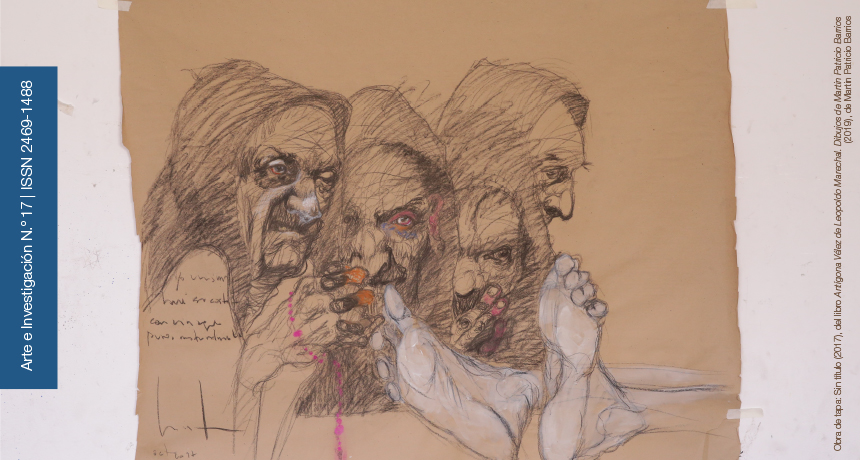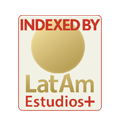Museum of Memory of Rosario. Recent Memory Through Art and Senses
DOI:
https://doi.org/10.24215/24691488e046Keywords:
Museums, memories, art, representationAbstract
This work inquires into the relationship between the museum’s exhibition mission and memory, through the mediation of artistic productions depicting the violence of StateTerrorism in the last Military Dictatorship (1976-1983). The case addressed is the narrative of the permanent exhibition of the Museum of Memory of Rosario. Some of the contemporary works of art that articulate the exhibition are analyzed as performances commemorating and communicating social memory about the recent past. The recovery and construction of this space as a museum materializes the political violence of a past that does not happen (Rousso, 2018) and shows the demand not to forget as a social commitment. It is then understood to be memory museums as fundamental tools of memory pedagogy (Crenzel, 2016, p. 65).Downloads
References
Bedford, L. (mayo de 2010). Trabajar en modo subjuntivo. Ponencia presentada en la Jornada de discusión De la idea al montaje: ¿Cómo poner en escena un concepto de exposición? Museo de Bellas Artes de Salta, Secretaría de Cultura, Gobierno de la Provincia de Salta, Salta, Argentina.
Bohoslavsky, E. y Soprano, G. (Comps.). (2010). Un Estado con rostro humano. Ciudad Autónoma de Buenos Aires, Argentina: Prometeo Libros.
Brebeck, W. (2001). Plea for the creation of an International Committe for Memorial Museums for Public Crimes against Humanity within the scope of the International Council of Museums (ICOM). Consejo Internacional de Museos, París: Francia. Recuperado de http://icmemo.mini.icom.museum/wp-content/uploads/sites/17/2019/01/plea_ICMEMO.pdf
Burucúa, J. E. y Kwiatkowski, N. (2014). Cómo sucedieron estas cosas. Representar masacres y genocidios. Ciudad Autónoma de Buenos Aires, Argentina: Katz. Crenzel, E. (2016). Sitios de memoria en la Argentina, una reflexión. Revista Ciencias Sociales, (90), 62-65. Recuperado de http://www.sociales.uba.ar/wp-content/blogs.dir/219/files/2016/03/13.-DOSSIER_CRENZEL_90.pdf
Da Silva Catela, L. (2001). No habrá flores en la tumba del pasado. La experiencia de reconstrucción del mundo de los familiares de desaparecidos. La Plata, Argentina: Al Margen.
Flier, P. (septiembre de 2018). La memoria social en Argentina. Sus legados y desafíos para la construcción de ciudadanías democráticas: entre la memoria y la historia. Ponencia presentada en el Coloquio Internacional Desaparición forzada en las experiencias nacionales: gestión ciudadana y prácticas forenses. Instituto de Investigaciones Dr. José María Luis Mora, Ciudad de México, México.
Flier, P. (octubre de 2008). El desafío de las políticas de la memoria en la historia reciente argentina frente al Bicentenario. Los caminos en la búsqueda de la verdad, justicia y memoria. Ponencia presentada en el Encuentro Internacional Imaginarios, memorias y perspectivas del Bicentenario en América Latina. Universidad Nacional de Córdoba, Córdoba, Argentina.
García, D. (2010). Ronda, la ardiente paciencia [Instalación]. Recuperado de http://www.museodelamemoria.gob.ar/page/obra/id/58/Garc%C3%ADa%2C-Daniel-/Ronda%2C-la-ardiente-paciencia
Heumann Gurian, E. (2010). Choosing among the options: an opinion piece about museum definitions. Curator: The museum Journal, 45(2), 75-88. doi:10.1111/j.2151-6952.2002.tb01182.x
Huyssen, A. (2002). En busca del futuro perdido. Cultura y memoria en tiempos de globalización. Ciudad de México, México: Fondo de Cultura Económica.
Jelin, E. (2002). Los trabajos de la memoria. Madrid, España: Siglo Veintiuno.
Jelin, E. y Langland, V. (2003). Introducción. Las marcas territoriales como nexo entre pasado y presente. En E. Jelin y V. Langland (Comps.), Monumentos, memoriales y marcas territoriales (pp. 1-18). Madrid, España: Siglo Veintiuno.
Lacapra, D. (2006). Historia en tránsito. Experiencia, identidad, teoría crítica. Ciudad Autónoma de Buenos Aires, Argentina: Fondo de Cultura Económica.
Museo de la Memoria. (2010). Pilares de la memoria. Recuperado de http://www.museodelamemoria.gob.ar/page/obra/id/26/Taparelli%2C-Dante/Pilares-de-la-memoria
Museo de la Memoria. (s. f.). Museo de la memoria de Rosario [Folleto]. Rosario, Argentina: Museo de la Memoria.
Museo Nacional Centro de Arte Reina Sofía (MNCARS). (2011). Entrevista a Andrea Hyussen [Video] Recuperado de https://www.museoreinasofia.es/r?bundle=%28video+OR+audio+OR+radio%29&keyword=Andreas+hyussen&f%5B100%5D=&fecha=&items_per_page=15&pasados=1&sort=rel
Peluffo Linari, G. (2015). Patrimonio cultural y espacios de la memoria en América Latina. TAREA, 2(2), 36-43. Recuperado de http://www.unsam.edu.ar/ojs/index.php/tarea/issue/view/9
Pierre, N. (1998). La aventura de Les lieux de mémoire. Revista Ayer, (32). Recuperado de http://revistaayer.com/articulo/954
Puzzolo, N. (2010). Evidencias [Instalación]. Recuperado de http://www.museodelamemoria.gob.ar/page/obra/id/1/Puzzolo%2C-Norberto/Evidencias
Sarno, A., Lloret, F., Gutierrez Marx, G. y Grandi, E. (2005). La crítica de exhibiciones. Una propuesta innovadora que pone en crisis las puestas museográficas. En M. Bonnin y M. J. Fernández (Comps.), Conservación, educación, gestión y exhibición en museo (pp. 279-305). Ciudad de Córdoba, Argentina: Red Jaguar.
Schindel, E. (2009). Inscribir el pasado en el presente: memoria y espacio urbano. Política y Cultura, (31), 65-87. Recuperado de http://www.scielo.org.mx/scielo.
php?script=sci_arttext&pid=S0188-77422009000100005
Scocco, M. (2016). La conmemoración de pasados traumáticos en Argentina. Sitios de Memoria y Museos en Rosario. Revista de Estudios Sociales Contemporáneos, (14), 140-154. Recuperado de https://ri.conicet.gov.ar/handle/11336/61132
Winter, J. (2004). Conmemorar la guerra. En AA.VV., En Guerra. Catálogo de la exposición homónima (pp. 330-338). Barcelona, España: Diputació de Barcelona, Centro de la Cultura Contemporánea de Barcelona y Forum Barcelona.
Downloads
Published
How to Cite
Issue
Section
License
The acceptance of the manuscript by the magazine means the non-exclusive cession of the property rights of the authors in favour of the editor, who allows the reuse, after publication (post print), under a license Attribution-NonCommercial-NoDerivatives 4.0 International. According to these terms, the material can be copied and redistributed by any means or in any format as long as a) the author and original source of the publication are quoted (magazine and URL of the work), access to the license is provided and whether changes have been made is mentioned; and b) the material is not used for commercial purposes.
The cession of non-exclusive rights means that after the publication (post print) in Arte e Investigación the authors can publish their work in any language, means and format; in such cases it must be mentioned that the material was originally published in this magazine. Such cession also means the authorization of the authors for the work to be collected by SEDICI, the institutional archive of the National University of La Plata, and to be spread in the databases that the editorial team considers appropriate to increase the visibility of the publication and its authors.
Moreover, the magazine encourages the authors to deposit their productions in other institutional and thematic archives under the principle that offering the society the scientific and academic production without any restrictions contributes to a greater exchange of the global knowledge.


































